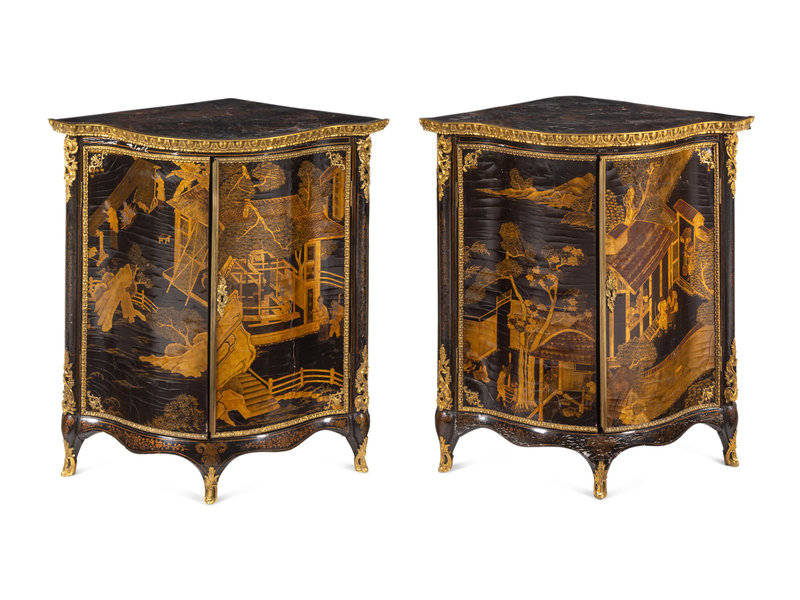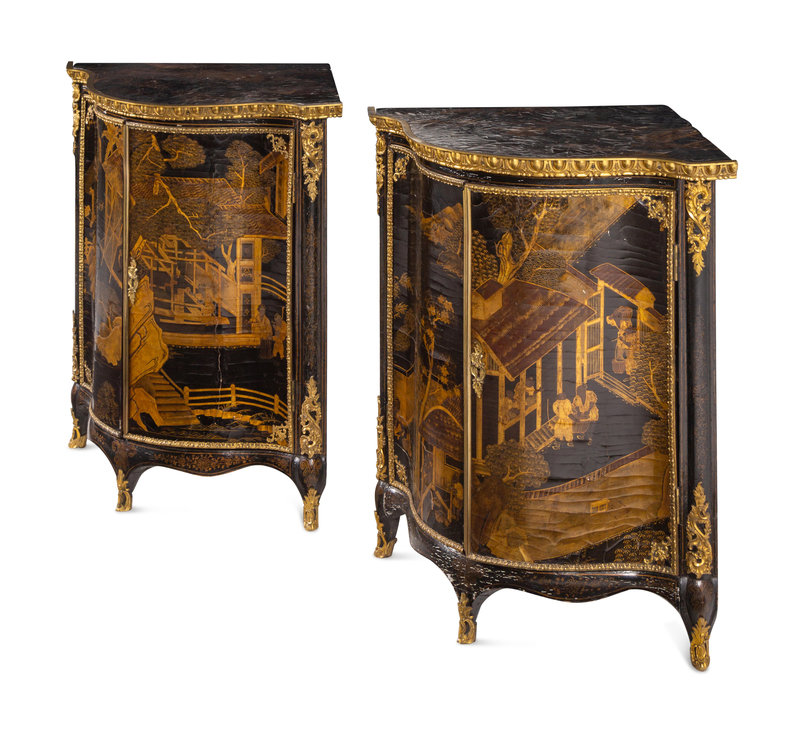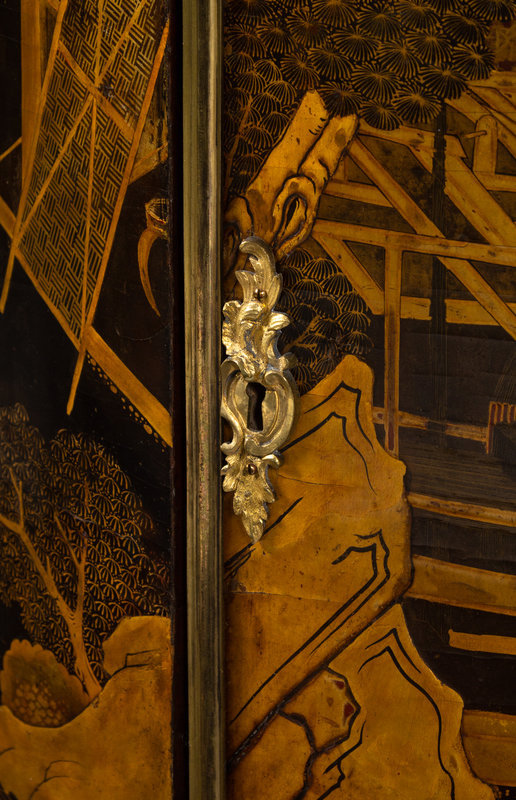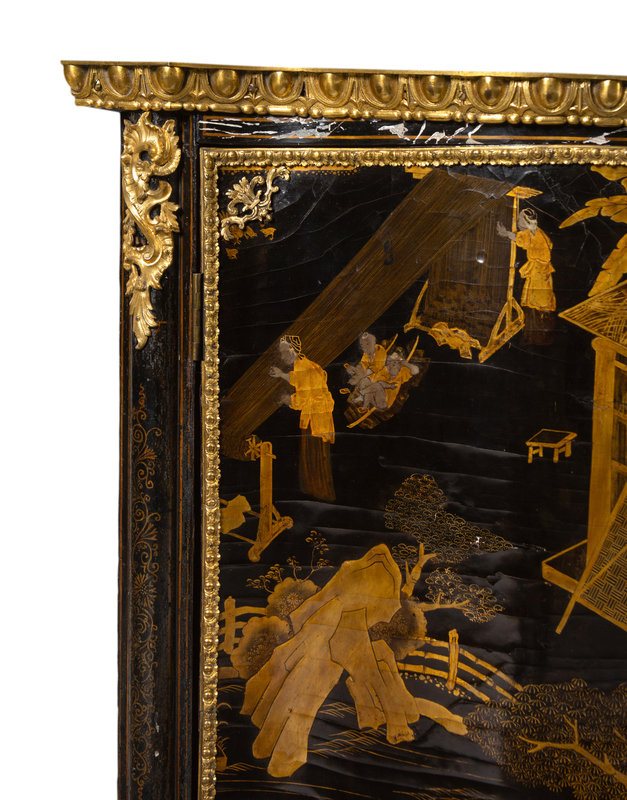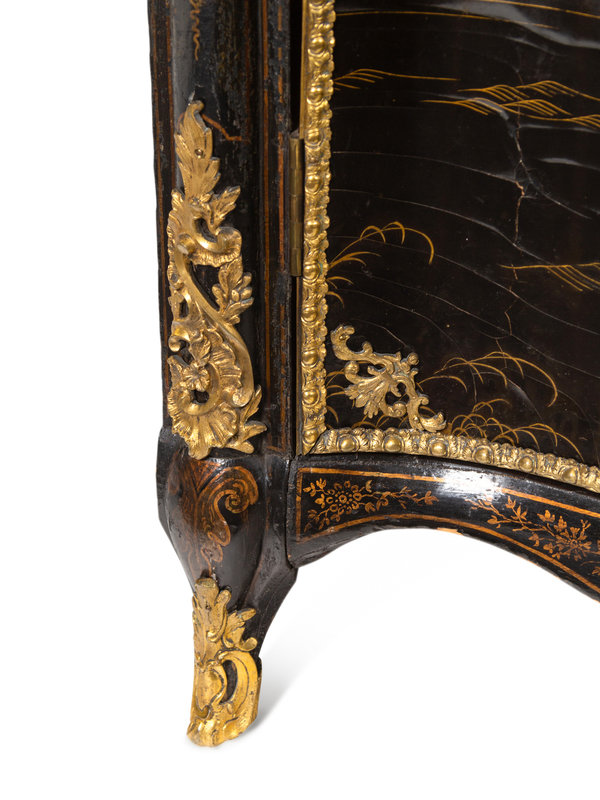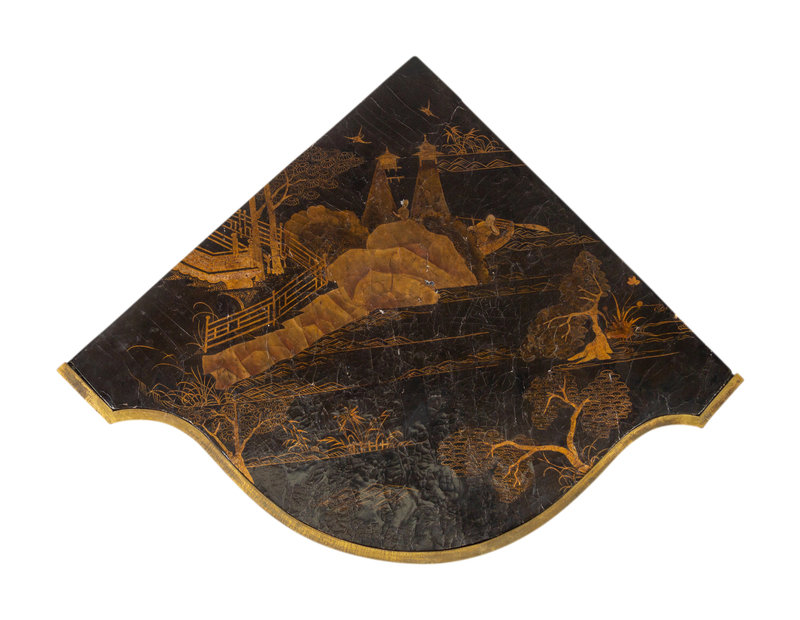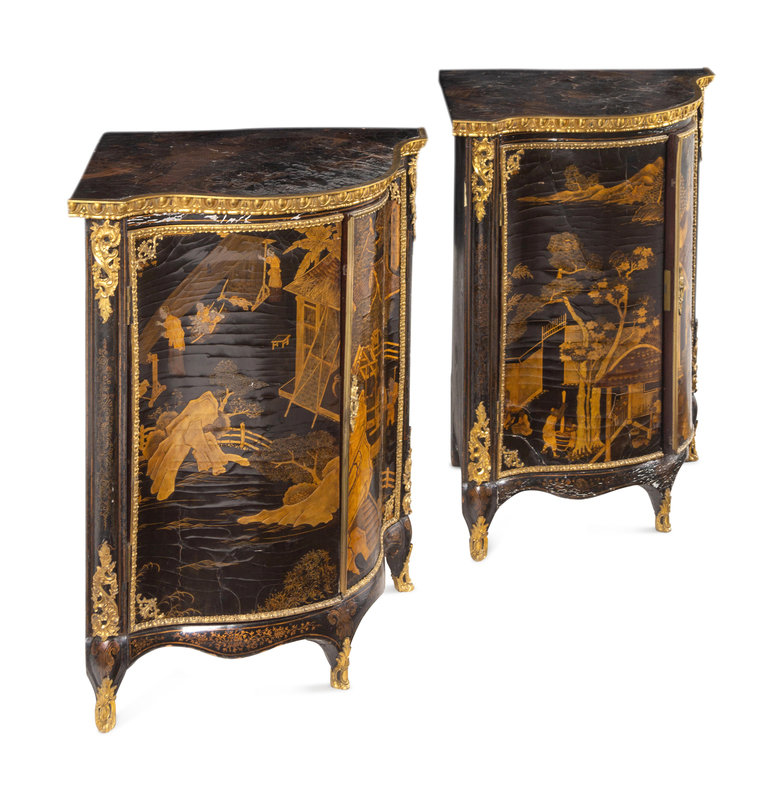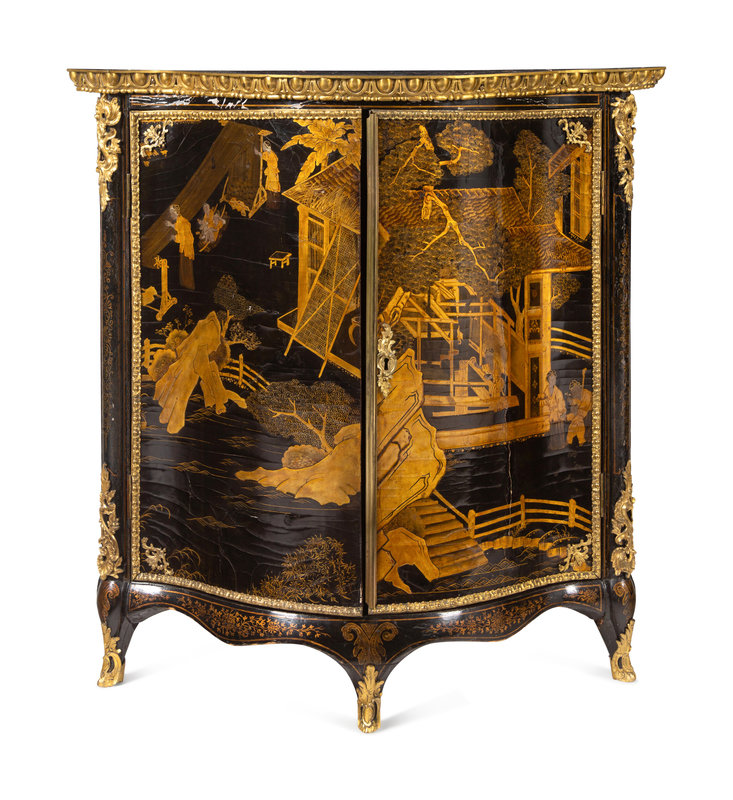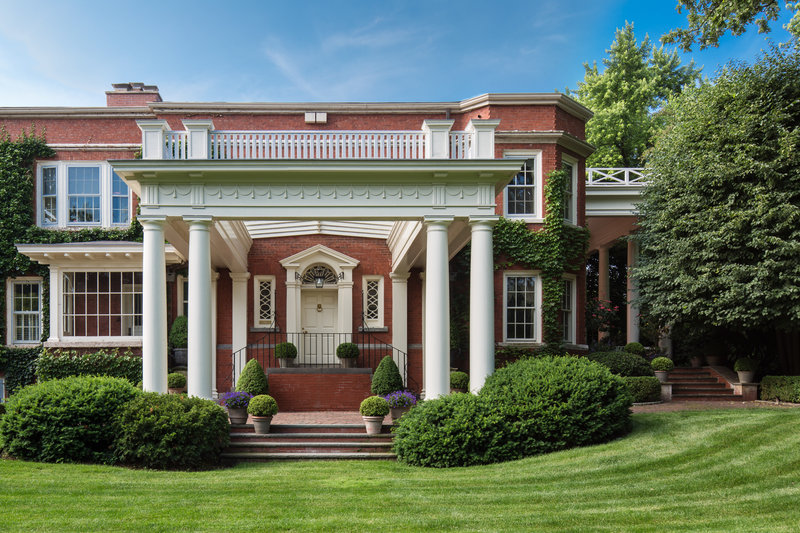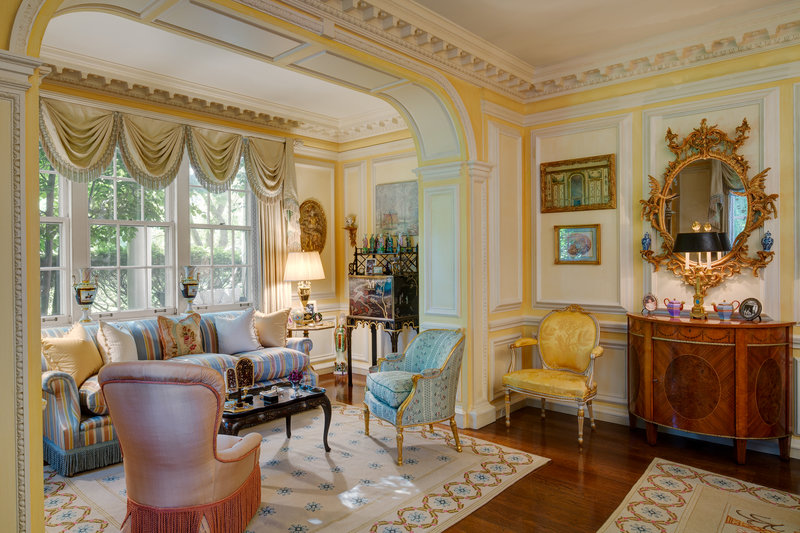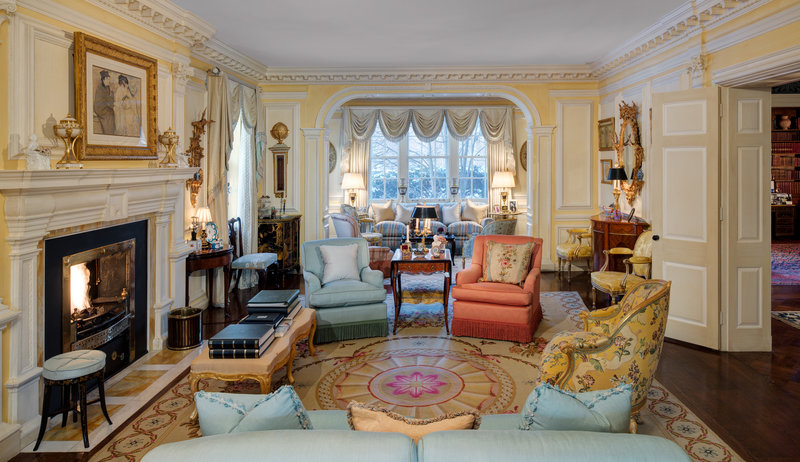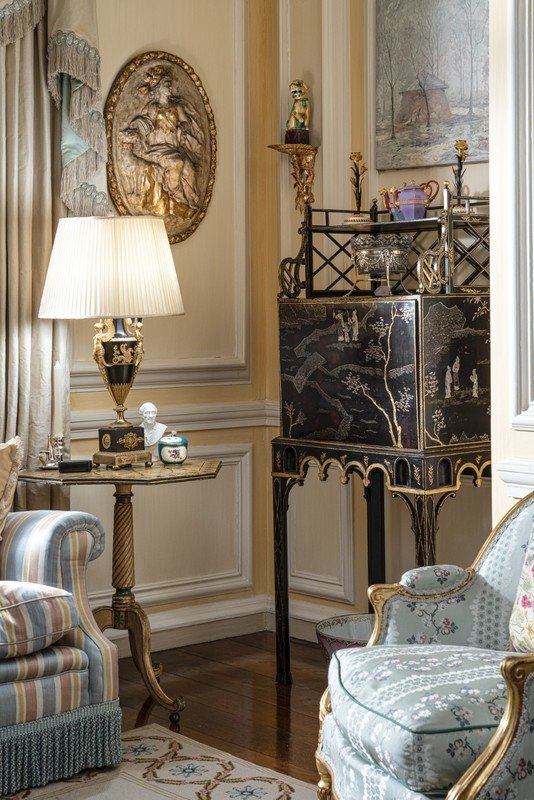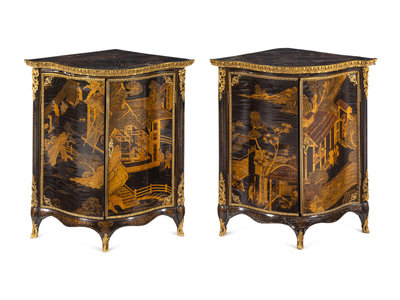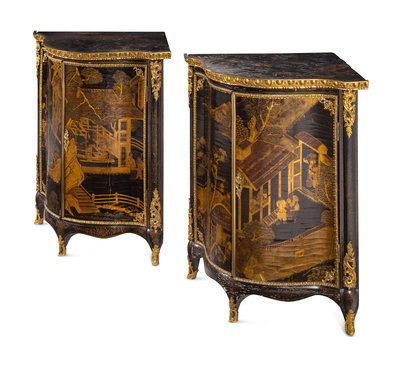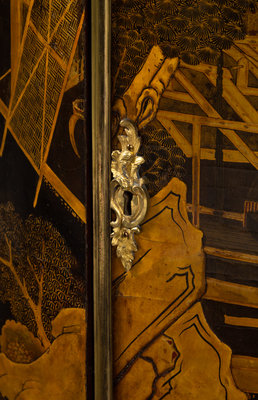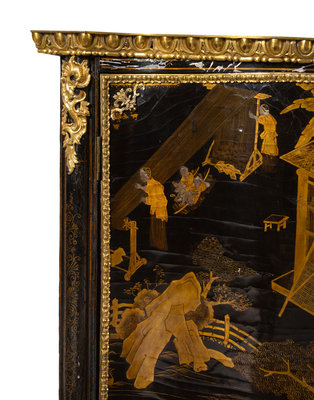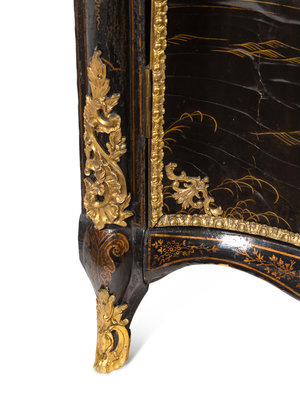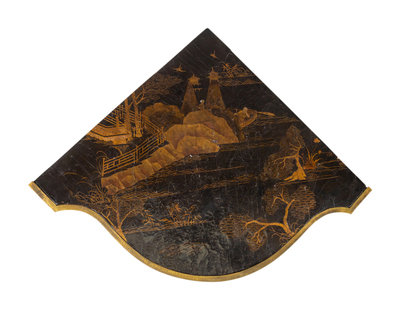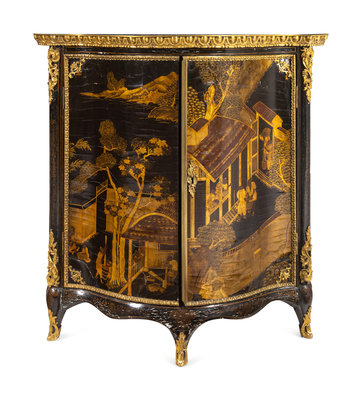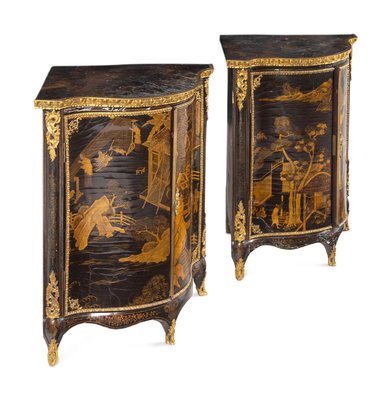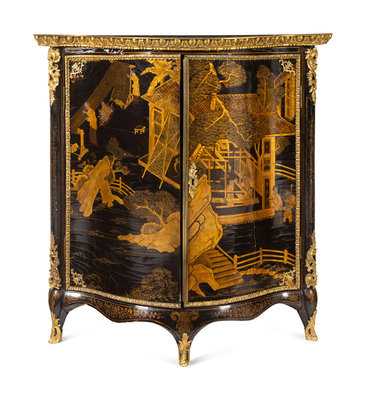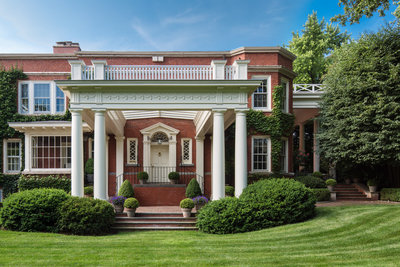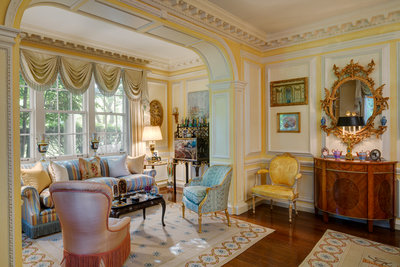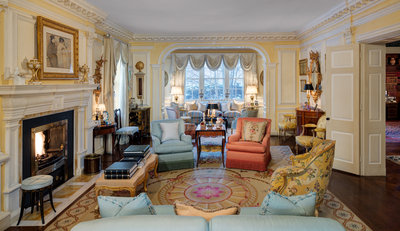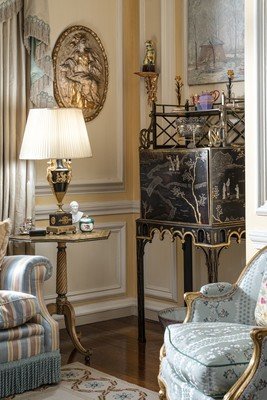A Pair of George III Gilt Ormolu-Mounted Chinese Lacquer Corner Cabinets
Sale 1157 - Property from the Fred and Kay Krehbiel Collection, Part I
Mar 15, 2023
10:00AM CT
Live / Chicago
Own a similar item?
Estimate
$20,000 -
30,000
Price Realized
$34,650
Sold prices are inclusive of Buyer’s Premium
Lot Description
A Pair of George III Gilt Ormolu-Mounted Chinese Lacquer Corner Cabinets
Attributed to Pierre Langlois, Circa 1765
one with an ink label inscribed Whitburn Hall, 1957.
Height 34 3/4 x width 34 x depth 25 1/2 inches; length of each side 24 inches.
Height 34 3/4 x width 34 x depth 25 1/2 inches; length of each side 24 inches.
This lot is located in Chicago.
Provenance:
(First example)
Difford's Antiques, Edinburgh (labeled)
Hotspur Ltd., London, 2002 (with invoice)
(Second example)
Private Collection;
Private Collection;
Sotheby’s, New York, 21 October 2005, Important English Furniture & Decorations from a Private Collection, Lot 4 (with copy of invoice)
Note:
This striking pair of corner cabinets incorporating Chinese lacquer panels are perhaps the only currently known examples that can be attributed to the renowned cabinet-maker Pierre Langlois (1718-1767). They are part of an elite group of furniture in the French or ‘modern’ style which were commissioned by some of the era’s foremost patrons and connoisseurs, including Sir Horace Walpole and the Duke of Bedford.
Unlike his contemporaries, Langlois, the child of French émigrés, learned his trade in Paris where it is thought he worked under Jean Francois Oeben. Langlois’ French training resulted in an oeuvre which was very distinctive from English cabinet-makers. His forms show both the familiarity and the technical skill required to closely emulate contemporary French prototypes. A related pair of encoignures by the Parisian ébéniste Jacques Dubois (P. Kjellberg, Les Mobiliers Français du XVIII Siècle, Paris, 1989, p. 270) also demonstrates the expertise required to shave panels from a Chinese screen and transform them into curved doors. Yet, Langlois’ workshop was not a faithful recreation of a Parisian atelier. His cabinet work had French styled paneled backboards made out of softwood but the exterior carcasses were almost always stained black which was unique to his workshop. The corner cabinets’ black lacquer tops are another departure from French examples which featured marble. Although Langlois’ mounts were clearly derived from French prototypes, they were almost certainly the work of his son-in-law, the French émigré metalworker Dominique Jean (d. 1807); the large-scale beaded border seen below the tops is also found on other Langlois furniture, including three richly mounted commodes, one in the King's Bedchamber at Windsor Castle (RCIN 21235) and a pair also in the Royal Collection (RCIN 2549).
These corner cabinets are part of a select group of furniture produced by Langlois that incorporate Chinese lacquer panels and are among his richest, most technically advanced work. Two pairs of commodes from around 1765 incorporate Chinese lacquer which is remarkably similar and could suggest they were all cut from the same Chinese screen. One pair was supplied to Sir Matthew Fetherstonhaugh (1714-1774) for Uppark, Sussex (NT 13647.1 and NT 13647.2) also have lacquer tops; the other pair are at Powis Castle, Wales and feature marble tops (NT 181049). A further single commode commissioned by Sir Horace Walpole for Strawberry Hill is now at the Fine Arts Museum of San Francisco (1985.58).
Whitburn Hall, County Durham, was acquired by Sir Hedworth Williamson, 6th Bt. before his death in 1810 and the house was subsequently enlarged and refurbished by his successors throughout the 19th century. The pair of corner cabinets were likely acquired by the 9th Bt., also Sir Hedworth Williamson (d. 1942), who inherited a massive fortune and was an active collector. He purchased the magnificent rococo paneling from Chesterfield House, London, which he installed at Whitburn in 1937.
Note:
This striking pair of corner cabinets incorporating Chinese lacquer panels are perhaps the only currently known examples that can be attributed to the renowned cabinet-maker Pierre Langlois (1718-1767). They are part of an elite group of furniture in the French or ‘modern’ style which were commissioned by some of the era’s foremost patrons and connoisseurs, including Sir Horace Walpole and the Duke of Bedford.
Unlike his contemporaries, Langlois, the child of French émigrés, learned his trade in Paris where it is thought he worked under Jean Francois Oeben. Langlois’ French training resulted in an oeuvre which was very distinctive from English cabinet-makers. His forms show both the familiarity and the technical skill required to closely emulate contemporary French prototypes. A related pair of encoignures by the Parisian ébéniste Jacques Dubois (P. Kjellberg, Les Mobiliers Français du XVIII Siècle, Paris, 1989, p. 270) also demonstrates the expertise required to shave panels from a Chinese screen and transform them into curved doors. Yet, Langlois’ workshop was not a faithful recreation of a Parisian atelier. His cabinet work had French styled paneled backboards made out of softwood but the exterior carcasses were almost always stained black which was unique to his workshop. The corner cabinets’ black lacquer tops are another departure from French examples which featured marble. Although Langlois’ mounts were clearly derived from French prototypes, they were almost certainly the work of his son-in-law, the French émigré metalworker Dominique Jean (d. 1807); the large-scale beaded border seen below the tops is also found on other Langlois furniture, including three richly mounted commodes, one in the King's Bedchamber at Windsor Castle (RCIN 21235) and a pair also in the Royal Collection (RCIN 2549).
These corner cabinets are part of a select group of furniture produced by Langlois that incorporate Chinese lacquer panels and are among his richest, most technically advanced work. Two pairs of commodes from around 1765 incorporate Chinese lacquer which is remarkably similar and could suggest they were all cut from the same Chinese screen. One pair was supplied to Sir Matthew Fetherstonhaugh (1714-1774) for Uppark, Sussex (NT 13647.1 and NT 13647.2) also have lacquer tops; the other pair are at Powis Castle, Wales and feature marble tops (NT 181049). A further single commode commissioned by Sir Horace Walpole for Strawberry Hill is now at the Fine Arts Museum of San Francisco (1985.58).
Whitburn Hall, County Durham, was acquired by Sir Hedworth Williamson, 6th Bt. before his death in 1810 and the house was subsequently enlarged and refurbished by his successors throughout the 19th century. The pair of corner cabinets were likely acquired by the 9th Bt., also Sir Hedworth Williamson (d. 1942), who inherited a massive fortune and was an active collector. He purchased the magnificent rococo paneling from Chesterfield House, London, which he installed at Whitburn in 1937.
Condition Report
Auction Specialist
